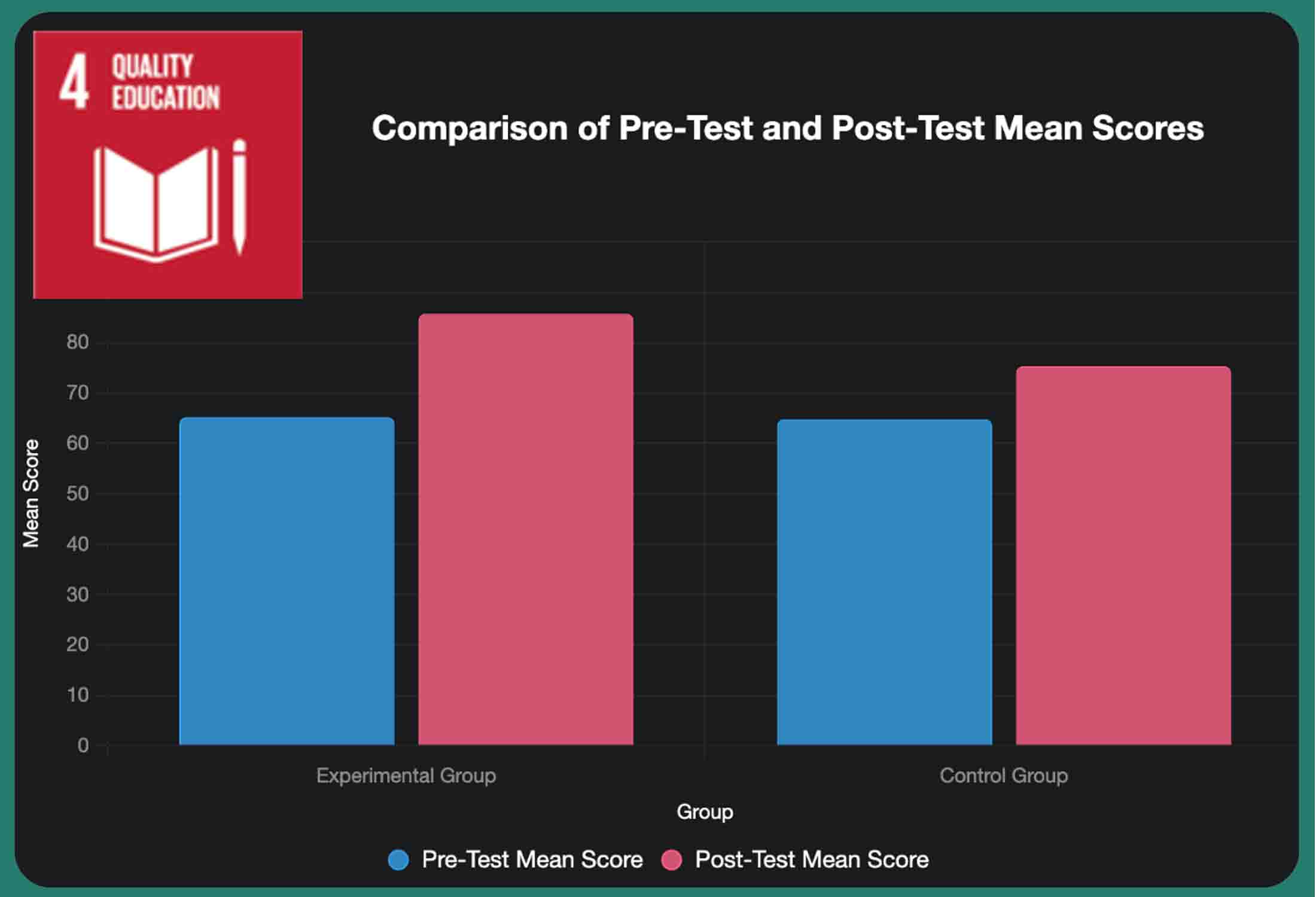Analysis of the Use of Android in Human-Computer Interaction Learning on the Learning Outcomes of Informatics Engineering Education Students
DOI:
https://doi.org/10.24036/javit.v5i3.269Keywords:
Android-based learning, Human-Computer Interaction, Learning Outcomes, Informatics Engineering Education, Interface PrototypingAbstract
This study investigates the influence of Android device utilization in Human–Computer Interaction (HCI) learning on student learning outcomes in the Informatics Engineering Education program at STKIP Al-Maksum. A quasi-experimental design was employed to compare an experimental group, which used Android-based activities such as interface prototyping with Android Studio and Figma, with a control group that relied on traditional lecture-based methods. Data were collected through pre-test and post-test assessments, questionnaires, observations, and interviews, and analyzed using descriptive statistics, independent t-test, linear regression, and thematic analysis. The findings indicate that the experimental group achieved an average improvement of 20.5 points (from 65.2 to 85.7), which was significantly higher than the 10.5-point increase observed in the control group (from 64.8 to 75.3). Independent t-test analysis confirmed a significant difference between groups (p < 0.001), while linear regression revealed that Android usage intensity predicted 45% of the variance in learning outcomes. Qualitative results further highlighted two key themes: interactive benefits (reported by 70% of participants) and technical challenges (30%). This study concludes that Android-based learning can significantly enhance HCI learning outcomes through interactive approaches, with technology training serving as an important supporting factor. However, technical challenges remain and should be addressed to ensure optimal implementation.
Downloads
References
S. Ghavifekr and W. A. W. Rosdy, “Teaching and learning with technology: Effectiveness of ICT integration in schools,” International Journal of Research in Education and Science, vol. 1, no. 2, pp. 175–191, 2015, https://doi.org/10.21890/ijres.23596.
S. Soparat, S. R. Arnold, and S. Klaysom, “The development of thai learners’ key competencies by project-based learning using ICT,” International Journal of Research in Education and Science, vol. 1, no. 1, pp. 11–22, 2015, https://doi.org/10.21890/ijres.01778.
L. Barik, A. A. Alrababah, and Y. D. Al-Otaibi, “Enhancing educational data mining based ICT competency among e-learning tutors using statistical classifier,” International Journal of Advanced Computer Science and Applications, vol. 11, no. 3, pp. 561–568, 2020, https://doi.org/10.14569/ijacsa.2020.0110371.
S. L. H. Lau and M. Abdullah, “Establishing Relationships Between Innovation Adoption and Country of Origin: A Study of Chinese Mobile Operating System,” International Journal of Academic Research in Business and Social Sciences, vol. 14, no. 12, 2024, https://doi.org/10.6007/ijarbss/v14-i12/24104.
V. Dakulagi, K. H. Yeap, H. Nisar, R. Dakulagi, G. N. Basavaraj, and M. V. Galindo, “An overview of techniques and best practices to create intuitive and user-friendly human-machine interfaces,” Artificial Intelligence and Multimodal Signal Processing in Human-Machine Interaction, pp. 63–77, Jan. 2024, https://doi.org/10.1016/B978-0-443-29150-0.00002-0.
M. Ahmad Faudzi, Z. Che Cob, R. Omar, S. A. Sharudin, and M. Ghazali, “Investigating the User Interface Design Frameworks of Current Mobile Learning Applications: A Systematic Review,” Educ Sci (Basel), vol. 13, no. 1, p. 94, Jan. 2023, https://doi.org/10.3390/educsci13010094.
AR Saravanakumar, G.P. Raja, and P. Sivakumar, “Transforming education: Perceptions and challenges of technology-enabled teacher education programmes,” Open Access Research Journal of Engineering and Technology, vol. 5, no. 2, pp. 001–007, 2023, https://doi.org/10.53022/oarjet.2023.5.2.0077.
M. Hines and R. Lynch, “The relationship of grade 7 students’ general ICT use and attitudes towards ICT use for school related activities with ICT self-efficacy in eleven English program,” Scholar: Human Sciences, 2019•auojs.au.edu, vol. 11, no. 2, pp. 366–384, 2019, [Online]. Available: https://auojs.au.edu/index.php/Scholar/article/view/4338.
M. B. Malik, R. Iskandar, and R. F. Naryanto, “Development of android-based mobile learning media to increase learning results in vocational high schools,” Journal of Research in Instructional, vol. 4, no. 2, pp. 425–438, Sep. 2024, https://doi.org/10.30862/jri.v4i2.462.
Setiawati, A. Huda, Ismaniar, and N. Ardi, “Design and Development of Android-Based E-Modul Application to Improve Prosocial Early Children by Family,” International journal of online and biomedical engineering, vol. 19, no. 12, pp. 111–126, Aug. 2023, https://doi.org/10.3991/ijoe.v19i12.40905.
Fadilla, Efrizon, M. A. Zaus, and V. I. Delianti, “Design and Development of Android-Based Interactive Learning Media for Basic Subjects in Computer and Telecommunication Network Engineering,” Jurnal Vokasi Informatika, vol. 5, no. 2, pp. 305–328, Jul. 2025, https://doi.org/10.24036/JAVIT.V5I2.241.
H. Ateş and M. Köroğlu, “Online collaborative tools for science education: Boosting learning outcomes, motivation, and engagement,” J Comput Assist Learn, vol. 40, no. 3, pp. 1052–1067, 2024, https://doi.org/10.1111/jcal.12931.
M. Akbari, G. A. Mousavi, S. Akbari, R. Dehghani, and S. D. Arani, “Evaluation of the level of environmental knowledge, attitude and performance of Kashan University of Medical Sciences students,” Journal of Entomological Research, vol. 46, pp. 1221–1226, 2022, https://doi.org/10.5958/0974-4576.2022.00207.9.
C. Papakostas, C. Troussas, A. Krouska, and C. Sgouropoulou, “Exploring Users’ Behavioral Intention to Adopt Mobile Augmented Reality in Education through an Extended Technology Acceptance Model,” Int J Hum Comput Interact, vol. 39, no. 6, pp. 1294–1302, 2023, https://doi.org/10.1080/10447318.2022.2062551.
C. G. Almaguer, M. Maya, E. Caballero, A. Acuna, C. Zubieta, and C. Yarto, “Stem competency-based learning for engineering and design students of the educational model tec21,” Proceedings of the 22nd International Conference on Engineering and Product Design Education, E and PDE 2020. 2020. https://doi.org/10.35199/epde.2020.25.
V. Indumathi, A. Evangelista, and S. Wang, “Evaluation of Civil Engineering students’ performance comparing online versus on-campus delivery mode,” IEEE Global Engineering Education Conference, EDUCON, vol. 2023-May. 2023. https://doi.org/10.1109/EDUCON54358.2023.10125235.
H. Baytiyeh and M. K. Naja, “Students’ perceptions of the flipped classroom model in an engineering course: a case study,” European Journal of Engineering Education, vol. 42, no. 6, pp. 1048–1061, 2017, https://doi.org/10.1080/03043797.2016.1252905.
A. Umar, H. A. Gani, and Purnamawati, “Assessment of Needs for Industrial Class Models Based on Work Culture in SMKs Across Makassar,” Social Science Studies, vol. 5, no. 4, pp. 281–300, Jul. 2025, https://doi.org/10.47153/sss54.19292025.
A. B. Pertiwi, J. Masunah, and T. Karyono, “Learning Activities Based on ‘EDU Creative Production Unit’ in Visual Communication Design Study Program at SMKN 9 Bandung,” pp. 264–272, Sep. 2024, https://doi.org/10.2991/978-2-38476-100-5_37.
C. B. Omeh, C. J. Olelewe, and E. C. Nwangwu, “Fostering computer programming and digital skills development: An experimental approach,” Computer Applications in Engineering Education, vol. 32, no. 2, p. e22711, Mar. 2024, https://doi.org/10.1002/cae.22711.
M. Alqahtani and H. Mohammad, “Mobile applications’ impact on student performance and satisfaction,” Turkish Online Journal of Educational Technology, vol. 14, no. 4, pp. 102–112, 2015.
N. Nurkholis, Wilarso, P. Sukamto, M. A. Sobarnas, S. Jamaludin, and U. A. Tsani, “Digital Survey for Customer Satisfaction of Regional Drinking Water Companies (PDAM) using the mWater Application and the Slovin Formula Method,” BIO Web Conf, vol. 144, p. 03006, Nov. 2024, https://doi.org/10.1051/bioconf/202414403006.
R. Suhartini, Ekohariadi, L. Nurlaela, U. Wahyuningsih, Yulistiana, and Y. I. Prihatina, “Validity, Reliability, Intra-rater Instrument Parameter Teaching Factory and Learning Outcomes of Industrial Clothing,” Proceedings of the International Joint Conference on Arts and Humanities 2021 (IJCAH 2021), vol. 618, pp. 1230–1239, Jan. 2022, https://doi.org/10.2991/assehr.k.211223.214.
G. W. Cheung, H. D. Cooper-Thomas, R. S. Lau, and L. C. Wang, Reporting reliability, convergent and discriminant validity with structural equation modeling: a review and best-practice recommendations, vol. 41, no. 2. Springer US, 2024. https://doi.org/10.1007/s10490-023-09871-y.
A. Field, Discovering statistics using ibm spss statistics. Sage publications limited, 2024.
P. Putra, F. Y. Liriwati, T. Tahrim, S. Syafrudin, and A. Aslan, “The Students Learning from Home Experiences during Covid-19 School Closures Policy In Indonesia,” Jurnal Iqra’ : Kajian Ilmu Pendidikan, vol. 5, no. 2, pp. 30–42, 2020, https://doi.org/10.25217/ji.v5i2.1019.
M. R. Pugu, S. Riyanto, and R. N. Haryadi, Metodologi penelitian; konsep, strategi, dan aplikasi. PT. Sonpedia Publishing Indonesia, 2024.
S. E. Embretson, “Item response theory models and spurious interaction effects in factorial ANOVA designs,” Appl Psychol Meas, vol. 20, no. 3, pp. 201–212, 1996, https://doi.org/10.1177/014662169602000302.
X. Lei, J. Fathi, S. Noorbakhsh, and M. Rahimi, “The Impact of Mobile-Assisted Language Learning on English as a Foreign Language Learners’ Vocabulary Learning Attitudes and Self-Regulatory Capacity,” Front Psychol, vol. 13, p. 872922, Jun. 2022, https://doi.org/10.3389/fpsyg.2022.872922.
C. L. Lee and R. Omar, “QR-driven mobile learning: enhancing TVET automotive education through interactive digital content,” Muallim Journal of Social Science and Humanities, pp. 219–230, Jun. 2025, https://doi.org/10.33306/mjssh/344.
A. Al-Hunaiyyan, R. Alhajri, S. Al-Sharhan, and A. Bimba, “Human-Computer Interaction Perspective on Mobile Learning: Gender and Social Implications,” International Journal of Interactive Mobile Technologies, vol. 15, no. 11, pp. 4–20, Jun. 2021, https://doi.org/10.3991/ijim.v15i11.21367.
A. Huda, W. Febrianti, Firdaus, Y. Hendriyani, B. R. Fajri, and M. Sukmawati, “Designing Digital Modules in Project-Based Learning-Based Printing Graphic Design Subjects at SMK N 1 Koto Baru Dharmasraya,” International Journal of Interactive Mobile Technologies , vol. 18, no. 18, pp. 94–111, 2024, https://doi.org/10.3991/ijim.v18i18.50551.
R. Li, A. Lund, and A. Nordsteien, “The link between flipped and active learning: a scoping review,” Teaching in Higher Education, vol. 28, no. 8, pp. 1993–2027, Nov. 2023, https://doi.org/10.1080/13562517.2021.1943655.

Downloads
Published
How to Cite
Issue
Section
License
Copyright (c) 2025 Teguh Ikhsani Putra

This work is licensed under a Creative Commons Attribution 4.0 International License.










